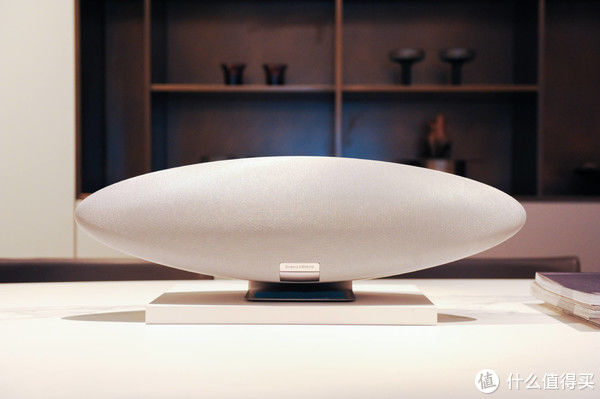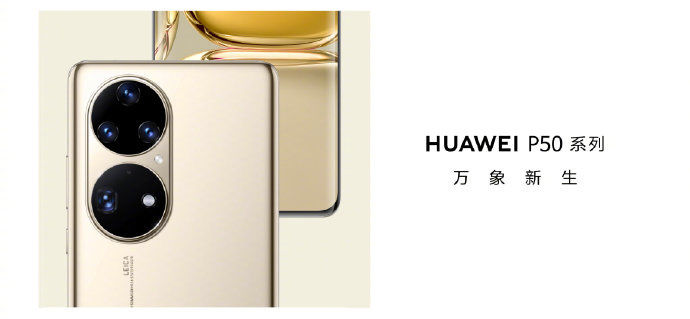гҖ”дёӨиЎҢе“ҘгҖ•жҸҗзәІжҢҲйўҶпјҢеёҰдҪ жўізҗҶGlideдё»иҰҒжәҗз ҒйҖ»иҫ‘пјҲдәҢпјү
дёҠзҜҮж–Үз« дё»иҰҒеҲҶжһҗGlideзҡ„еӨ„зҗҶжөҒзЁӢд»ҘеҸҠwithпјҲпјүж–№жі•зҡ„еҶ…йғЁйҖ»иҫ‘пјҲеҸӮйҳ…пјҡгҖ”дёӨиЎҢе“ҘгҖ•жҸҗзәІжҢҲйўҶпјҢеёҰдҪ жўізҗҶGlideдё»иҰҒжәҗз ҒйҖ»иҫ‘пјҲдёҖпјүпјүпјҢжң¬зҜҮдё»иҰҒеҲҶжһҗloadпјҲпјүж–№жі•пјҢеҗҢж—¶дёәеӨ§е®¶д»Ӣз»ҚBitmapдјҳеҢ–е’ҢLruCacheз®—жі•зӣёе…ізҗҶи®әпјҢдёәжңҖеҗҺдёҖдёӘйҮҚеӨҙжҲҸintoпјҲпјүж–№жі•еҒҡй“әеһ«гҖӮ
Glide.withпјҲпјүж–№жі•иҝ”еӣһеҖјзұ»еһӢдёәRequestMangerпјҢйӮЈд№ҲжҲ‘们继з»ӯеҲҶжһҗloadпјҲпјүж–№жі•д№ҹдё»иҰҒйӣҶдёӯеңЁRequestMangerзұ»дёӯгҖӮ
loadпјҲпјүж–№жі•дё»иҰҒжҳҜеҜ№GlideеҶ…йғЁзҡ„ModelиҝӣиЎҢе°ҒиЈ…дёҺеӨ„зҗҶпјҲд»Җд№ҲжҳҜModelпјҹиҜ·еҸӮйҳ…дёҠзҜҮж–Үз« пјүпјҢжңҖз»ҲеҪўжҲҗеӣҫзүҮеҠ иҪҪиҜ·жұӮгҖӮ
дёҖгҖҒloadпјҲпјүжәҗз ҒйҖ»иҫ‘
еңЁRequestMangerзұ»дёӯжҸҗдҫӣдәҶеӨҡз§ҚloadпјҲпјүж–№жі•зҡ„йҮҚиҪҪпјҢеҢ…жӢ¬loadпјҲString stringпјүгҖҒloadпјҲUri uriпјүгҖҒloadпјҲInteger resIdпјүгҖҒloadпјҲFile fileпјүзӯүпјҢеҲҶеҲ«йҖӮз”ЁдәҺеҠ иҪҪзҪ‘з»ңеӣҫзүҮең°еқҖпјҢеҠ иҪҪеӣҫзүҮUriпјҢеҠ иҪҪеӣҫзүҮresIdпјҢеҠ иҪҪеӣҫзүҮж–Ү件зӯүпјҢжҲ‘们д»ҘеҠ иҪҪзҪ‘з»ңеӣҫзүҮең°еқҖдёәдҫӢиҝӣиЎҢеҲҶжһҗпјҡ
RequestManger.java
......зңҒз•Ҙ
public DrawableTypeRequest load(String string) {
return (DrawableTypeRequest) fromString().load(string);
}
......зңҒз•Ҙ
public DrawableTypeRequest fromString() {
return loadGeneric(String.class);
}
......зңҒз•Ҙ
private DrawableTypeRequest loadGeneric(Class modelClass) {
ModelLoader streamModelLoader = Glide.buildStreamModelLoader(modelClass, context);
ModelLoader fileDescriptorModelLoader = Glide.buildFileDescriptorModelLoader(modelClass, context);
if (modelClass != null && streamModelLoader == null && fileDescriptorModelLoader == null) {
throw new IllegalArgumentException("......");
}
return optionsApplier.apply(new DrawableTypeRequest(modelClass, streamModelLoader, fileDescriptorModelLoader, context,glide, requestTracker, lifecycle, optionsApplier));
}
......зңҒз•Ҙ
е…ҲзңӢloadпјҲпјүж–№жі•зҡ„иҝ”еӣһеҖјзұ»еһӢпјҡDrawableTypeRequest
GenericRequestBuilder.java
protected final Class modelClass;
protected final Context context;
protected final Glide glide;
protected final Class transcodeClass;
protected final RequestTracker requestTracker;
//иҜ·жұӮиҝҪиёӘеҷЁ
protected final Lifecycle lifecycle;
private ChildLoadProvider loadProvider;
private ModelType model;
private Key signature = EmptySignature.obtain();
// model may occasionally be null, so to enforce that load() was called, set a boolean rather than relying on model not to be null.
private boolean isModelSet;
private int placeholderId;
//еҚ дҪҚеӣҫResId
private int errorId;
//еҠ иҪҪеӨұиҙҘеӣҫResId
private RequestListener requestListener;
//иҜ·жұӮзӣ‘еҗ¬
private Float thumbSizeMultiplier;
private GenericRequestBuilder thumbnailRequestBuilder;
private Float sizeMultiplier = 1f;
//е°әеҜёзј©ж”ҫжҜ”дҫӢ
private Drawable placeholderDrawable;
//еҚ дҪҚеӣҫDrawable
private Drawable errorPlaceholder;
//еҠ иҪҪеӨұиҙҘеӣҫDrawable
private Priority priority = null;
private boolean isCacheable = true;
private GlideAnimationFactory animationFactory = NoAnimation.getFactory();
private int overrideHeight = -1;
//иҰҶеҶҷй«ҳеәҰ
private int overrideWidth = -1;
//иҰҶеҶҷе®ҪеәҰ
private DiskCacheStrategy diskCacheStrategy = DiskCacheStrategy.RESULT;
//зЈҒзӣҳзј“еӯҳзӯ–з•Ҙ
private Transformation transformation = UnitTransformation.get();
private boolean isTransformationSet;
private boolean isThumbnailBuilt;
private Drawable fallbackDrawable;
private int fallbackResource;
дёҠиҝ°жәҗз ҒжҲӘеҸ–дәҶGenericRequestBuilderзұ»жүҖжңүзҡ„жҲҗе‘ҳеҸҳйҮҸгҖӮеҸҜд»ҘеҸ‘зҺ°GlideйҖҡиҝҮжһ„е»әиҖ…жЁЎејҸй…ҚзҪ®зҡ„жүҖжңүеҸӮж•°йғҪеңЁиҝҷйҮҢпјҲд»Җд№ҲжҳҜжһ„е»әиҖ…жЁЎејҸпјҹиҜ·иҜ»иҖ…иҮӘиЎҢжҹҘйҳ…еӯҰд№ пјүпјҢloadпјҲпјүж–№жі•жңҖз»Ҳиҝ”еӣһдәҶеҠ иҪҪеӣҫзүҮзҡ„иҜ·жұӮеҜ№иұЎпјҲDrawableTypeRequest
жҺҘзқҖзңӢloadпјҲпјүж–№жі•дҪ“еҶ…зҡ„fromStringпјҲпјүж–№жі•гҖӮfromStringпјҲпјүж–№жі•еҶ…йғЁи°ғз”ЁдәҶloadGenericпјҲпјүж–№жі•гҖӮеңЁloadGenericпјҲпјүж–№жі•еҶ…йғЁпјҢжҲ‘们зңӢеҲ°дәҶзҶҹжӮүзҡ„еҗҚеӯ—пјҡModelLoaderгҖӮеңЁдёҠдёҖзҜҮдёӯпјҢжҲ‘们已з»Ҹд»Ӣз»ҚиҝҮпјҢе°ҶModelиҪ¬еҢ–дёәDataзҡ„и§’иүІе°ұжҳҜModelLoaderгҖӮиҝҷйҮҢдёҖе…ұеҲӣе»әдәҶдёӨдёӘModelLoaderпјҢдёҖдёӘжҳҜиҫ“е…ҘжөҒModelLoaderпјҢдёҖдёӘжҳҜж–ҮжЎЈжҸҸиҝ°з¬ҰModelLoaderгҖӮж–№жі•жңҖз»Ҳиҝ”еӣһдәҶoptionsApplier.apply(new DrawableTypeRequest
RequestManger.java
private final OptionsApplier optionsApplier;
//з”ЁжҲ·иҮӘе®ҡд№үзҡ„Glideй…ҚзҪ®еҘ—з”ЁиҖ…
private DefaultOptions options;
//з”ЁжҲ·иҮӘе®ҡд№үзҡ„Glideй…ҚзҪ®
......зңҒз•Ҙ
public interface DefaultOptions {
/**
* Allows the implementor to apply some options to the given request.
*
* @param requestBuilder The request builder being used to construct the load.
* @param The type of the model.
*/
void apply(GenericRequestBuilder requestBuilder);
}
......зңҒз•Ҙ
class OptionsApplier {public > X apply(X builder) {
if (options != null) {
options.apply(builder);
}
return builder;
}
}
......зңҒз•Ҙ
OptionsApplierпјҲoptionsApplierпјүдёәRequestMangerзҡ„еҶ…йғЁзұ»пјҢеҸӘжңүдёҖдёӘapplyпјҲX builderпјүж–№жі•гҖӮеңЁapplyпјҲX builderпјүдёӯпјҢеҜ№optionsиҝӣиЎҢдәҶйқһз©әеҲӨж–ӯпјҢеҰӮжһңдёҚдёәз©әпјҢе°ұи°ғз”Ёoptionsзҡ„applyпјҲпјүж–№жі•гҖӮеҰӮжәҗз Ғдёӯзҡ„жіЁйҮҠиҜҙжҳҺпјҢoptionsдёәRequestMangerзұ»зҡ„жҲҗе‘ҳеҸҳйҮҸпјҲз”ЁжҲ·иҮӘе®ҡд№үзҡ„Glideй…ҚзҪ®пјүпјҢеҰӮжһңз”ЁжҲ·жІЎжңүдј е…ҘoptionsпјҢеҲҷй»ҳи®ӨеҖјдёәnullгҖӮapplyпјҲX builderпјүж–№жі•жңҖз»Ҳе°ҶеҸӮж•°builderиҝӣиЎҢдәҶиҝ”еӣһпјҢз»“еҗҲдёҠж–ҮжқҘзңӢпјҢbuilderеҚі DrawableTypeRequest
з»јдёҠпјҢloadGenericпјҲпјүж–№жі•жңҖз»ҲеҲӣе»әдәҶдёҖдёӘDrawableTypeRequest
жіЁпјҡRequestTrackerжҳҜGlideдёӯдёҖдёӘж ёеҝғзұ»пјҢе°ҶеңЁдёӢдёҖзҜҮintoпјҲпјүж–№жі•дёӯзқҖйҮҚд»Ӣз»ҚгҖӮ дәҢгҖҒBitmapдјҳеҢ– пјҲдёҖпјүBitmapзҡ„OOM BitmapеҚ з”ЁеҶ…еӯҳеӨ§е°Ҹ = еҗҢж—¶еҠ иҪҪзҡ„Bitmapж•°йҮҸ * жҜҸдёӘBitmapеӣҫзүҮзҡ„е®ҪеәҰpx * жҜҸдёӘBitmapеӣҫзүҮзҡ„й«ҳеәҰpx * жҜҸдёӘеғҸзҙ еҚ з”Ёзҡ„еҶ…еӯҳгҖӮиҖҢжҜҸдёӘеғҸзҙ еҚ жңүеӨҡеӨ§зҡ„еҶ…еӯҳе‘ўпјҹиҝҷеҸ–еҶідәҺжӯӨеғҸзҙ зҡ„зұ»еҲ«еҸҠжҳҜеҗҰйҮҮз”ЁдәҶеҺӢзј©жҠҖжңҜгҖӮ
еҰӮжһңжҳҜйқһй»‘еҚізҷҪзҡ„дәҢеҖјеӣҫеғҸпјҢдёҚеҺӢзј©зҡ„жғ…еҶөдёӢдёҖдёӘеғҸзҙ еҸӘйңҖиҰҒ1дёӘbitгҖӮ
еҰӮжһңжҳҜ256з§ҚпјҲ2зҡ„8ж¬Ўж–№пјүзҠ¶жҖҒзҡ„зҒ°еәҰеӣҫеғҸпјҢдёҚеҺӢзј©зҡ„жғ…еҶөдёӢдёҖдёӘеғҸзҙ йңҖиҰҒ8bitпјҲ1ByteпјҢ256з§ҚзҠ¶жҖҒпјүгҖӮ
еҰӮжһңз”Ё256з§ҚпјҲ2зҡ„8ж¬Ўж–№пјүзҠ¶жҖҒж ҮиҜҶеұҸ幕дёҠжҹҗз§ҚйўңиүІзҡ„зҒ°еәҰпјҢиҖҢеұҸ幕йҮҮз”ЁдёүеҹәиүІзәўз»ҝи“қпјҲRGBпјүпјҢдёҚеҺӢзј©зҡ„жғ…еҶөдёӢдёҖдёӘеғҸзҙ йңҖиҰҒеҚ з”Ё24bitпјҲ3ByteпјүпјҢиҝҷдёӘе°ұжҳҜеёёиҜҙзҡ„24дҪҚзңҹеҪ©иүІгҖӮ
иҝҳжңүеҗ„з§Қе…¶д»–зҡ„еӯҳеӮЁж–№ејҸпјҢдҫӢеҰӮ15bitгҖҒ16bitгҖҒ32bitзӯүгҖӮеҰӮжһңиҖғиҷ‘еҲ°еҺӢзј©пјҢжңүжҚҹеҺӢзј©жҲ–ж— жҚҹеҺӢзј©пјҢе…·дҪ“йҮҮз”Ёзҡ„еҺӢзј©з®—жі•еҸҠеҺӢзј©еҸӮж•°и®ҫзҪ®йғҪдјҡеҪұе“ҚдёҖдёӘеғҸзҙ еҚ з”Ёзҡ„еӯҳеӮЁз©әй—ҙгҖӮ
дҫӢеҰӮпјҢеҰӮжһңеңЁйЎөйқўжҳҫзӨәдёҖеј 1920 * 1080зҡ„еӣҫзүҮпјҢйҮҮз”ЁAndroidеҶ…зҪ®зҡ„ARGB_8888еҺӢзј©пјҢеҚ з”Ёзҡ„еҶ…еӯҳеӨ§зәҰдёә8MBе·ҰеҸігҖӮ
иҖҢжҜҸдёӘAndroidеә”з”Ёзҡ„VMе ҶеҶ…еӯҳдёҠйҷҗжҳҜйҖҡиҝҮdalvik.vm.heapgrowthlimitи®ҫзҪ®пјҲеҸӮйҳ…пјҡAndroid Dalvik Heap жө…жһҗпјүпјҢеҰӮжһңеҗҢдёҖдёӘйЎөйқўеұ•зӨәзҡ„еӣҫзүҮй•ҝе®ҪиҝҮеӨ§жҲ–ж•°йҮҸиҝҮеӨҡпјҢеҚ з”Ёзҡ„еҶ…еӯҳи¶…иҝҮдәҶжӯӨдёҠйҷҗеҖјпјҢе°ұдјҡеҜјиҮҙOOMгҖӮ
жіЁпјҡ1GB = 1024MBпјӣ1MB = 1024KBпјӣ1KB = 1024Byteпјӣ1Byte = 8bitгҖӮ пјҲдәҢпјүBitmapзҡ„дјҳеҢ–зӯ–з•Ҙ 1.йҖүжӢ©дёҚеҗҢзҡ„еӣҫзүҮеҺӢзј©зӯ–з•ҘпјҢжҜ”еҰӮдҪҝз”ЁBitmap.Config.RGB_565д»ЈжӣҝBitmap.Config.ARGB_8888пјҢеҗҢж—¶еҜ№еӣҫзүҮиҝӣиЎҢеҺӢзј©зӯүпјӣ
/**
* @param bitmapжәҗBitmap
* @param maxSize зӣ®ж ҮBitmapжңҖеӨ§еҖјпјҲKBпјү
* @return
*/
private Bitmap zipBitmap(Bitmap bitmap, int maxSize) {
ByteArrayOutputStream baos = new ByteArrayOutputStream();
bitmap.compress(CompressFormat.JPEG, 100, baos);
int options = 100;
while ((baos.toByteArray().length / 1024 > maxSize)) {
baos.reset();
bitmap.compress(CompressFormat.JPEG, options, baos);
options -= 5;
}
ByteArrayInputStream bais = new ByteArrayInputStream(baos.toByteArray());
return BitmapFactory.decodeStream(bais);
}
2.е°ҶеӣҫзүҮжҢүжҜ”дҫӢеҺӢзј©е°әеҜёеҗҺеҶҚеұ•зӨәпјӣ
/**
* @param bitmapжәҗBitmap
* @param maxWidthзӣ®ж ҮBitmapжңҖеӨ§е®Ҫ
* @param maxHeight зӣ®ж ҮBitmapжңҖеӨ§й«ҳ
* @return
*/
private Bitmap zipBitMap(Bitmap bitmap, int maxWidth, int maxHeight) {
ByteArrayOutputStream baos = new ByteArrayOutputStream();
bitmap.compress(CompressFormat.JPEG, 100, baos);
Options options = new Options();
options.inJustDecodeBounds = true;
float width = options.outWidth * 1.0F;
float height = options.outHeight * 1.0F;
int size = 1;
if (width > maxWidth || height > maxHeight) {
int widthRatio = Math.round(width / maxWidth);
int heightRatio = Math.round(height / maxHeight);
size = widthRatio > heightRatio ? widthRatio : heightRatio;
}
options.inSampleSize = size;
options.inJustDecodeBounds = false;
ByteArrayInputStream bais = new ByteArrayInputStream(baos.toByteArray());
return BitmapFactory.decodeStream(bais);
}
3.дҪҝз”Ёtry...catch...жҠ“еҸ–OOMејӮеёёгҖӮ
дёүгҖҒLruCacheз®—жі•пјҲLeastRecentlyUsedпјҢжңҖиҝ‘жңҖе°‘дҪҝз”Ёз®—жі•пјҢеҸӮйҳ…пјҡLRUзј“еӯҳж·ҳжұ°з®—жі•пјү гҖҗгҖ”дёӨиЎҢе“ҘгҖ•жҸҗзәІжҢҲйўҶпјҢеёҰдҪ жўізҗҶGlideдё»иҰҒжәҗз ҒйҖ»иҫ‘пјҲдәҢпјүгҖ‘GlideжӢҘжңүдёүзә§зј“еӯҳпјҢеҚіжҜҸиҺ·еҸ–еҲ°дёҖеј еӣҫзүҮпјҢйғҪдјҡеңЁеҶ…еӯҳе’Ңжң¬ең°ж–Ү件иҝӣиЎҢзј“еӯҳпјҢеҰӮжһңдёӢж¬ЎеҸҲз”ЁеҲ°дәҶеҗҢж ·зҡ„еӣҫзүҮпјҡ
1.еҶ…еӯҳжңүж— йңҖиҰҒзҡ„еӣҫзүҮпјҹжңүзҡ„иҜқе°ұз”ЁпјҢжІЎжңүе°ұеҺ»жң¬ең°ж–Ү件жүҫгҖӮ
2.жң¬ең°ж–Ү件жңүж— йңҖиҰҒзҡ„еӣҫзүҮпјҹжңүзҡ„иҜқе°ұз”ЁпјҢжІЎжңүе°ұеҺ»зҪ‘з»ңжүҫгҖӮ
дёҖе…ұжңүдёүдёӘзҺҜиҠӮпјҡеҶ…еӯҳ --> жң¬ең°ж–Ү件 --> зҪ‘з»ңгҖӮ
иҜҙе®Ңдёүзә§зј“еӯҳпјҢжҺҘдёӢжқҘеҶҚеј•е…ҘдёҖдёӘжҰӮеҝөпјҡLruзј“еӯҳз®—жі•пјҢеҰӮдёӢеӣҫжүҖзӨәгҖӮ

ж–Үз« еӣҫзүҮ
Lruзј“еӯҳз®—жі•зӨәж„Ҹеӣҫ еҲ’йҮҚзӮ№пјҡ 1.ж–°ж•°жҚ®жҸ’е…ҘеҲ°й“ҫиЎЁеӨҙйғЁпјӣ 2.жҜҸеҪ“зј“еӯҳе‘ҪдёӯпјҲеҚізј“еӯҳж•°жҚ®иў«и®ҝй—®пјүпјҢеҲҷе°Ҷж•°жҚ®з§»еҲ°й“ҫиЎЁеӨҙйғЁпјӣ 3.еҪ“й“ҫиЎЁж»Ўзҡ„ж—¶еҖҷпјҲеҚіиҫҫеҲ°жҖ»зј“еӯҳж•°йҮҸдёҠйҷҗпјүпјҢе°Ҷй“ҫиЎЁе°ҫйғЁзҡ„ж•°жҚ®дёўејғгҖӮ Glideзҡ„еҶ…еӯҳзј“еӯҳзӯ–з•ҘеҹәдәҺLruCacheз®—жі•пјҢandroid.utilеҢ…дёӢе°ұжңүе…ідәҺLruзј“еӯҳз®—жі•зҡ„е®һзҺ°зұ»LruCacheгҖӮ
и®©жҲ‘们зңӢзңӢLruCacheзҡ„жәҗз Ғе®һзҺ°пјҢйҰ–е…ҲжқҘзңӢзңӢLruCacheзҡ„жҲҗе‘ҳеҸҳйҮҸеҸҠжһ„йҖ ж–№жі•гҖӮ
LruCache.java
private final LinkedHashMap map;
//LruCacheеҶ…йғЁеҹәдәҺLinkedHashMapе®һзҺ°
private int size;
//еҪ“еүҚе·Ізј“еӯҳзҡ„ж•°йҮҸ
private int maxSize;
//еҸҜзј“еӯҳзҡ„жңҖеӨ§ж•°йҮҸпјҲжҖ»зј“еӯҳе®№йҮҸпјү
private int putCount;
//еҠ е…Ҙзҡ„зј“еӯҳж•°йҮҸ
private int createCount;
//еҲӣйҖ зҡ„зј“еӯҳж•°йҮҸпјҲеҰӮжһңеҸ–зј“еӯҳж—¶зј“еӯҳдёҚеӯҳеңЁпјҢеҲҷдјҡдјҳе…ҲеҲӣйҖ зј“еӯҳпјҢдёӢж–ҮеҲҶжһҗпјү
private int evictionCount;
//ж·ҳжұ°зҡ„ж•°йҮҸпјҲеҰӮжһңи¶…еҮәзј“еӯҳе®№йҮҸпјҢеҲҷжңҖе°‘дҪҝз”Ёзҡ„зј“еӯҳдјҡиў«ж·ҳжұ°пјү
private int hitCount;
//е‘Ҫдёӯж•°йҮҸпјҲеҰӮжһңеҸ–з”Ёзј“еӯҳпјҢзј“еӯҳдҫқж—§еӯҳеңЁпјҢжІЎжңүжІЎж·ҳжұ°пјҢеҲҷз®—дҪңе‘Ҫдёӯпјү
private int missCount;
//жңӘе‘Ҫдёӯж•°йҮҸпјҲеҰӮжһңеҸ–з”Ёзј“еӯҳпјҢзј“еӯҳе·Із»Ҹиў«ж·ҳжұ°пјҢеҲҷз®—жңӘе‘Ҫдёӯпјүpublic LruCache(int maxSize) {
if (maxSize <= 0) {
throw new IllegalArgumentException("maxSize <= 0");
}
this.maxSize = maxSize;
this.map = new LinkedHashMap(0, 0.75f, true);
}
з•ҷж„ҸLruCacheжһ„йҖ ж–№жі•пјҢйҰ–е…ҲеҜ№maxSizeиҝӣиЎҢдәҶиөӢеҖјгҖӮе…¶ж¬ЎпјҢеңЁеҲӣе»әLinkedHashMap
第дёҖдёӘеҸӮж•°дёәinitialCapacityпјҢеҚіеҲқе§Ӣе®№йҮҸпјҢе®ҡд№үдәҶLinkedHashMapзҡ„еҲқе§ӢеӨ§е°ҸгҖӮ
第дәҢдёӘеҸӮж•°дёәloadFactorпјҢеҚіеҠ иҪҪеӣ еӯҗпјҢй»ҳи®ӨеҖј0.75FпјҢж„ҸдёәеҰӮжһңLinkedHashMapдёӯзҡ„е…ғзҙ ж•°йҮҸиҫҫеҲ°дәҶжҖ»е®№йҮҸзҡ„75%пјҢе°ұдјҡжү©е®№дёәеҺҹжқҘзҡ„дёӨеҖҚгҖӮдҫӢеҰӮпјҢе®ҡд№үдёҖдёӘHashMapпјҢеҲқе§Ӣе®№йҮҸй»ҳи®Өдёә16пјҢеҠ иҪҪеӣ еӯҗ0.75FпјҢйӮЈд№ҲжӯӨHashMapзҡ„еҲқе§Ӣе®һйҷ…е®№йҮҸдёә12пјҢеҪ“HashMapеҶ…е…ғзҙ ж•°йҮҸиҫҫеҲ°12ж—¶пјҢдјҡиҮӘеҠЁжү©е®№иҮі2еҖҚпјҢеҚі32гҖӮиҝҷеқ—еҗ„дҪҚиҜ»иҖ…еҸҜд»ҘеҸӮйҳ…HashMapжәҗз ҒпјҢж—ҘеҗҺжҲ‘д№ҹдјҡеҶҷдёҖдәӣHashMapжәҗз ҒеҲҶжһҗгҖӮ
第дёүдёӘеҸӮж•°дёәaccessOrderпјҢе®ҡд№үдәҶLinkedHashMap
жҺҘдёӢжқҘзңӢдёҖдёӢLruCacheзұ»дёӯзҡ„еӣӣдёӘж ёеҝғж–№жі•пјҡиҺ·еҸ–ж•°жҚ®гҖҒзј“еӯҳж•°жҚ®гҖҒи°ғж•ҙжҖ»зј“еӯҳеӨ§е°ҸеҸҠеҲ йҷӨж•°жҚ®гҖӮ
пјҲдёҖпјүиҺ·еҸ–ж•°жҚ® LruCache.java
//иҺ·еҸ–ж•°жҚ®
public final V get(K key) {
if (key == null) {
throw new NullPointerException("key == null");
}V mapValue;
synchronized (this) {
mapValue = https://www.it610.com/article/map.get(key);
if (mapValue != null) {
//е‘Ҫдёӯж•°йҮҸ+1пјҢ并иҝ”еӣһmapValue
hitCount++;
return mapValue;
}
missCount++;
//жңӘе‘Ҫдёӯж•°йҮҸ+1
}/*
* Attempt to create a value. This may take a long time, and the map
* may be different when create() returns. If a conflicting value was
* added to the map while create() was working, we leave that value in
* the map and release the created value.
*/V createdValue = create(key);
if (createdValue == null) {
return null;
}synchronized (this) {
createCount++;
mapValue = map.put(key, createdValue);
if (mapValue != null) {
// There was a conflict so undo that last put
map.put(key, mapValue);
} else {
size += safeSizeOf(key, createdValue);
}
}if (mapValue != null) {
entryRemoved(false, key, createdValue, mapValue);
return mapValue;
} else {
trimToSize(maxSize);
return createdValue;
}
}
еҜ№иҺ·еҸ–ж•°жҚ®ж–№жі•getпјҲK keyпјүиҝӣиЎҢеҲҶжһҗгҖӮйҰ–е…Ҳд»ҺLinkedHashMapдёӯgetпјҲkeyпјүпјҢеҰӮжһңеҸ–еҮәж•°жҚ®дёҚдёәnullпјҢиҜҙжҳҺж•°жҚ®е‘ҪдёӯпјҢе‘Ҫдёӯж•°и®Ўж•°+1пјҢеҗҢж—¶иҝ”еӣһеҸ–еҮәзҡ„ж•°жҚ®гҖӮеҰӮжһңеҸ–еҮәж•°жҚ®дёәnullпјҢжңӘе‘Ҫдёӯж•°и®Ўж•°+1пјҢgetпјҲK keyпјү方法继з»ӯеҗ‘дёӢжү§иЎҢпјҢи°ғз”ЁдәҶж–№жі•дҪ“еҶ…зҡ„createпјҲkeyпјүж–№жі•гҖӮcreateпјҲkeyпјүж–№жі•жү§иЎҢдәҶд»Җд№Ҳж“ҚдҪңе‘ўпјҹжҹҘзңӢжәҗз ҒгҖӮ
LruCache.java
/**
* Called after a cache miss to compute a value for the corresponding key.
* Returns the computed value or null if no value can be computed. The
* default implementation returns null.
*
* The method is called without synchronization: other threads may
* access the cache while this method is executing.
*
* If a value for {@code key} exists in the cache when this method
* returns, the created value will be released with {@link #entryRemoved}
* and discarded. This can occur when multiple threads request the same key
* at the same time (causing multiple values to be created), or when one
* thread calls {@link #put} while another is creating a value for the same
* key.
*/
protected V create(K key) {
return null;
}
дёәдҫҝдәҺзҗҶи§ЈпјҢжҲ‘жҠҠеҺҹжіЁйҮҠд№ҹж‘ҳеҪ•дәҶеҮәжқҘгҖӮcreateпјҲK keyпјүж–№жі•еңЁиҺ·еҸ–ж•°жҚ®еӨұиҙҘпјҲжңӘе‘Ҫдёӯзј“еӯҳпјүзҡ„ж—¶еҖҷи°ғз”ЁпјҢз”ЁжҲ·еҸҜд»ҘиҰҶеҶҷиҜҘж–№жі•пјҢеңЁжңӘе‘Ҫдёӯзј“еӯҳзҡ„ж—¶еҖҷиҝ”еӣһзү№е®ҡзҡ„ж•°жҚ®пјҢй»ҳи®Өжғ…еҶөдёӢиҝ”еӣһдәҶnullгҖӮ
еҜ№жҺҘдёӢжқҘзҡ„дёҖдёӘеҗҢжӯҘд»Јз Ғеқ—иҝӣиЎҢеҲҶжһҗпјҢеҸҜиғҪиҜ»иҖ…еҜ№иҝҷеқ—д»Јз Ғйқһеёёз–‘жғ‘пјҢеҰӮдёӢж®өеҜ№mapж•°жҚ®йҮҚж–°иҰҶзӣ–зҡ„йҖ»иҫ‘гҖӮ
LruCache.java
synchronized (this) {
createCount++;
mapValue = https://www.it610.com/article/map.put(key, createdValue);
if (mapValue != null) {
// There was a conflict so undo that last put
map.put(key, mapValue);
} else {
size += safeSizeOf(key, createdValue);
}
}
йҰ–е…Ҳе°ҶеҲӣйҖ зҡ„зј“еӯҳж•°йҮҸи®Ўж•°+1гҖӮ
жіЁпјҡи°ғз”ЁHashMap.putпјҲkeyпјҢvalueпјүж–№жі•е…·жңүиҝ”еӣһеҖјгҖӮеҰӮжһңеҺҹжң¬HashMapдёӯkey = вҖңkeyвҖқпјҢеҜ№еә”зҡ„value = https://www.it610.com/article/вҖңpreValueвҖқпјҢи°ғз”ЁputпјҲвҖңkeyвҖқпјҢвҖңnewValueвҖқпјүж–№жі•еҗҺпјҢеҲҷputпјҲпјүж–№жі•дјҡиҝ”еӣһвҖңpreValueвҖқпјҢзҺ°HashMapдёӯзҡ„иҜҘй”®еҖјеҜ№дёәпјҡkey = вҖңkeyвҖқпјҢеҜ№еә”зҡ„value = вҖңnewValueвҖқгҖӮеҚіеҰӮжһңkeyеҜ№еә”зҡ„valueеҺҹжң¬е°ұжңүеҖјпјҢиӢҘи°ғз”ЁputпјҲпјүж–№жі•ж”ҫе…Ҙж–°valueпјҢеҲҷputпјҲпјүж–№жі•дјҡиҝ”еӣһеҺҹжң¬зҡ„ж—§valueгҖӮ еӣһеҲ°жәҗз ҒдёӯпјҢи°ғз”Ёmap.put(key, createdValue)ж–№жі•пјҢиҝ”еӣһиҜҘkeyеҖјзҡ„еҺҹжң¬ж•°жҚ®mapValueгҖӮеҰӮжһңеҺҹжң¬зҡ„mapValueдёҚдёәnullпјҢеҲҷеҶҚж¬Ўи°ғз”ЁputпјҲkeyпјҢmapValueпјүе°ҶеҺҹжң¬ж•°жҚ®mapValueж”ҫеӣһеҺ»гҖӮиҝҷйҮҢдјҡжҜ”иҫғз–‘жғ‘пјҢдёәд»Җд№ҲmapValueеҸҜиғҪдёҚдёәnullпјҹд№ӢеүҚи°ғз”ЁgetпјҲkeyпјүж–№жі•дёҚжҳҜе·Із»ҸиҜҙжҳҺиҜҘkeyеҜ№еә”зҡ„mapValueдёәnullдәҶеҗ—пјҹдёәд»Җд№ҲиҝҳиҰҒз”ЁmapValueиҰҶзӣ–жҺүcreatedValueпјҹ
иҝҷйҮҢдҪ“зҺ°дәҶжәҗз ҒдҪңиҖ…зҡ„дёҘи°ЁжҖ§гҖӮеүҚж–Үе·Із»ҸиҜҙиҝҮпјҢеңЁиҝҷеқ—д»Јз Ғд№ӢеүҚе·Із»Ҹи°ғз”ЁдәҶ create(key)ж–№жі•пјҢй»ҳи®Өиҝ”еӣһдәҶnullгҖӮиҖҢе®һйҷ…жғ…еҶөдёӯпјҢз”ЁжҲ·еҸҜиғҪиҰҶеҶҷиҜҘж–№жі•пјҢеңЁжңӘе‘Ҫдёӯзј“еӯҳзҡ„жғ…еҶөдёӢпјҢиҝ”еӣһиҮӘе®ҡд№үзҡ„ж•°жҚ®гҖӮиҖҢз”ЁжҲ·иҰҶеҶҷзҡ„йҖ»иҫ‘еҸҜиғҪжҳҜиҖ—ж—¶ж“ҚдҪңпјҢеҗҢж—¶жӯӨеӨ„зҡ„д»Јз Ғ并дёҚжҳҜзәҝзЁӢе®үе…Ёзҡ„пјҢеӣ жӯӨеңЁи°ғз”ЁдёҠиҝ°еҗҢжӯҘд»Јз Ғеқ—зҡ„ж—¶еҖҷпјҢmap.put(key, createdValue)ж–№жі•еҸҜиғҪдјҡиҝ”еӣһжӣҫз»Ҹе·Із»Ҹж”ҫиҝӣеҺ»зҡ„mapValueгҖӮйӮЈд№ҲжҺҘдёӢжқҘзҡ„ж“ҚдҪңе°ұжҳҜе°ҶеҺҹжң¬ж”ҫиҝӣеҺ»зҡ„mapValueеҶҚж¬ЎиҰҶзӣ–createdValueпјҢеҚіеҶҚж¬Ўи°ғз”Ёmap.put(key, mapValue)пјҢй”ҖжҜҒжҺүcreatedValueгҖӮиҝҷйҮҢиҜ·иҜ»иҖ…д»”з»ҶдҪ“жӮҹгҖӮ size += safeSizeOf(key, createdValue)зҡ„дҪңз”ЁжҳҜйҮҚж–°и®Ўз®—жӯӨж—¶е·Із»ҸеҚ з”Ёзҡ„зј“еӯҳж•°йҮҸгҖӮжҺҘдёӢжқҘifпјҲmapValue != nullпјүзҡ„еҲҶж”Ҝдёӯжү§иЎҢдәҶentryRemovedпјҲfalse, key, createdValue, mapValueпјүж–№жі•пјҢиҝҷжҳҜиҰҒе®һзҺ°е•ҘпјҹзңӢзңӢжәҗз Ғпјҡ
LruCache.java
/**
* Called for entries that have been evicted or removed. This method is
* invoked when a value is evicted to make space, removed by a call to
* {@link #remove}, or replaced by a call to {@link #put}. The default
* implementation does nothing.
*
* The method is called without synchronization: other threads may
* access the cache while this method is executing.
*
* @param evicted true if the entry is being removed to make space, false
*if the removal was caused by a {@link #put} or {@link #remove}.
* @param newValue the new value for {@code key}, if it exists. If non-null,
*this removal was caused by a {@link #put}. Otherwise it was caused by
*an eviction or a {@link #remove}.
*/
protected void entryRemoved(boolean evicted, K key, V oldValue, V newValue) {}
зңӢеҺҹжіЁйҮҠпјҢдәҶи§ЈеҲ°иҝҷжҳҜдёҖдёӘз©әе®һзҺ°пјҢеҰӮжһңжңүйңҖиҰҒзҡ„иҜқпјҢз”ЁжҲ·еҸҜд»ҘиҰҶеҶҷиҝҷдёӘж–№жі•пјҢиҝҷдёӘж–№жі•дјҡеңЁзј“еӯҳж•°жҚ®иў«ж·ҳжұ°жҲ–移йҷӨж—¶и°ғз”ЁгҖӮеӣһеҲ°д№ӢеүҚзҡ„д»Јз ҒпјҢifпјҲmapValue != nullпјүзҡ„elseеҲҶж”Ҝжү§иЎҢдәҶtrimToSize(maxSize)жқҘеҜ№и¶…иҝҮжңҖеӨ§зј“еӯҳж•°йҮҸеӨ–зҡ„зј“еӯҳж•°жҚ®иҝӣиЎҢдәҶж·ҳжұ°пјҢдёӢж–ҮеҶҚеҜ№trimToSize(maxSize)ж–№жі•иҝӣиЎҢеҲҶжһҗгҖӮ
пјҲдәҢпјүзј“еӯҳж•°жҚ® LruCache.java
//зј“еӯҳж•°жҚ®
public final V put(K key, V value) {
if (key == null || value =https://www.it610.com/article/= null) {
throw new NullPointerException("key == null || value =https://www.it610.com/article/= null");
}V previous;
synchronized (this) {
putCount++;
size += safeSizeOf(key, value);
previous = map.put(key, value);
if (previous != null) {
size -= safeSizeOf(key, previous);
}
}if (previous != null) {
entryRemoved(false, key, previous, value);
}trimToSize(maxSize);
return previous;
}
йҰ–е…ҲеҜ№еҠ е…Ҙзҡ„зј“еӯҳи®Ўж•°putCount+1пјҢ并жү§иЎҢsize += safeSizeOf(key, value)еҜ№е·Ізј“еӯҳж•°жҚ®е®№йҮҸйҮҚж–°и®Ўз®—гҖӮ然еҗҺи°ғз”Ёmap.put(key, value)иҺ·еҸ–еҺҹжң¬ж—§зј“еӯҳpreviousгҖӮеҰӮжһңpreviousдёҚдёәnullпјҢйңҖиҰҒеҶҚж¬Ўжү§иЎҢsize -= safeSizeOf(key, previous)еҜ№е·Ізј“еӯҳж•°жҚ®е®№йҮҸйҮҚж–°и®Ўз®—гҖӮ
entryRemoved(false, key, previous, value)ж–№жі•еүҚж–Үе·Із»ҸеҲҶжһҗиҝҮпјҢи·іиҝҮгҖӮ
жңҖз»ҲеҸҲи°ғз”ЁдәҶtrimToSize(maxSize)еҜ№и¶…иҝҮжңҖеӨ§зј“еӯҳж•°йҮҸеӨ–зҡ„зј“еӯҳж•°жҚ®иҝӣиЎҢдәҶж·ҳжұ°гҖӮ
пјҲдёүпјүи°ғж•ҙзј“еӯҳеӨ§е°Ҹ LruCache.java
//и°ғж•ҙжҖ»зј“еӯҳеӨ§е°Ҹ
public void trimToSize(int maxSize) {
while (true) {
K key;
V value;
synchronized (this) {
if (size < 0 || (map.isEmpty() && size != 0)) {
throw new IllegalStateException(getClass().getName()
+ ".sizeOf() is reporting inconsistent results!");
}if (size <= maxSize) {
break;
}Map.Entry toEvict = map.eldest();
if (toEvict == null) {
break;
}key = toEvict.getKey();
value = https://www.it610.com/article/toEvict.getValue();
map.remove(key);
size -= safeSizeOf(key, value);
evictionCount++;
}entryRemoved(true, key, value, null);
}
}
иҝҷеқ—йҖ»иҫ‘жҜ”иҫғз®ҖеҚ•пјҢж ёеҝғзӮ№жҳҜи°ғз”Ё map.eldest()иҺ·еҸ–жңҖиҖҒзҡ„зј“еӯҳй”®еҖјеҜ№гҖӮд»ҺmapдёӯremoveиҜҘй”®еҖјеҜ№пјҢйҮҚж–°и®Ўз®—е·Ізј“еӯҳж•°йҮҸпјҢ并еҜ№ж·ҳжұ°зј“еӯҳж•°йҮҸи®Ўж•°evictionCount+1гҖӮ
пјҲеӣӣпјүеҲ йҷӨж•°жҚ® LruCache.java
//еҲ йҷӨж•°жҚ®
public final V remove(K key) {
if (key == null) {
throw new NullPointerException("key == null");
}V previous;
synchronized (this) {
previous = map.remove(key);
if (previous != null) {
size -= safeSizeOf(key, previous);
}
}if (previous != null) {
entryRemoved(false, key, previous, null);
}return previous;
}
жңҖеҗҺзңӢдёҖдёӢеҲ йҷӨж•°жҚ®зҡ„йҖ»иҫ‘пјҢжҜ”иҫғз®ҖеҚ•пјҢз•ҷз»ҷиҜ»иҖ…иҮӘиЎҢйҳ…иҜ»гҖӮ
иҝҷзҜҮж–Үз« еҲ°жӯӨз»“жқҹпјҢдёӢзҜҮж–Үз« е°ҶеҜ№Glideзҡ„intoпјҲпјүж–№жі•иҝӣиЎҢеҲҶжһҗпјҢиҝҷе°ҶжҳҜGlideдёӯжңҖеӨҚжқӮзҡ„ж–№жі•гҖӮеҶҚдјҡгҖӮ
жҺЁиҚҗйҳ…иҜ»
- е“Ҙе“ҘпјҢжЈ®дәҡfai|е“Ҙе“ҘпјҢжЈ®дәҡfai з»ңпјҒ
- еҮӯд»Җд№ҲиҰҒеҜ№еӨ–еҚ–е°Ҹе“ҘиҜҙи°ўи°ўпјҲпјү
- е“ҘдјҰеёғжҳҜеҰӮдҪ•еҸ‘зҺ°ж–°еӨ§йҷҶзҡ„пјҲзҫҺжҙІеңҹи‘—зҡ„дёӨеӨ§ж–ҮжҳҺеҸҲжҳҜеҰӮдҪ•жІҰйҷ·зҡ„пјҹпјү
- жҲ‘е“Ҙзҡ„жү“е·Ҙз»ҸеҺҶ
- иҗҢе“ҘдёҺиҫүе“ҘпјҲ第е…ӯйӣҶпјү|иҗҢе“ҘдёҺиҫүе“ҘпјҲ第е…ӯйӣҶпјү | е°ҸеҲ«зҰ»
- з”ҹжҙ»дёҺжёёжҲҸж—Ҙи®°пјҲ第182зҜҮпјүпјҲгҖ”жҲҗй•ҝзһ¬й—ҙгҖ•е…іжіЁи§ЈеҶій—®йўҳ2019.10пјү
- е°ҸеқҡжҢҒеҪұе“ҚдәІе“Ҙе“Ҙ
- жүҳе°јиҖҒеёҲејҖеә—и®°пјҲдәҢпјү
- гҖҗеҲҳе“Ҙд№ұи°Ҳ?002гҖ‘е•–е•–иҚ”жһқ
- е“Ҙ们зҡ„иҜ—пјҢеҘҪж°”йӯ„














